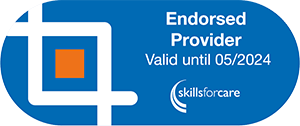Balancing profit and loss as a care provider in 2023 is a critical skill. Managing costs must be viewed in the round, to avoid a drop in quality and therefore a drop in the perception of your care provision.
Often what seems like a standalone cost is, in reality, an investment creating a moat around your business, generating revenue, creating savings and cost avoidance. This is particularly true of staff training in a scrutinised and highly regulated sector such as social care.
What is the greater cost, sourcing a specific training topic, or not being able to cater for an element of a person-centred care plan?
What is the bigger cost, checking staff competency compared to harm, or injury caused by a preventable accident?
What is the larger cost, creating a culture based on staff development and trust, leading to greater efficiency and autonomy where staff are proud of their work, happy to support others and promote the organisation to external parties? Or where staff don’t want to be at work and your retention becomes unmanageable?
Training increases the breadth of skills in your organisation so you can deliver a wider range of care packages for clients with more complex needs. Training also means your staff are more likely to stay and you can cut your recruitment and induction costs.
There are clear evident financial implications in moving from ‘requires improvement’, to ‘good’, to ‘outstanding’ – and in travelling in the opposite direction. The majority of CQC reports published following a care provider being downgraded reference improvements to training required. The lower the grading, the greater the repetition of the words ‘training required’ can be found within the subsequent report.
The Balance Between Cost and Value has Shifted
We’ve yet to meet a care manager, operating an ‘outstanding’ care provision, who didn’t understand the value of staff training – including the skills, competence, confidence and knowledge that are gained from quality, well-planned and executed training.
These delivery styles can then be bolstered by face-to-face sessions (on a lesser scale than previously) and competency testing, making the entire training delivery more engaging and effective.
The direct and indirect costs of training are lower, while the value of interactive digital training modules that are always available for refreshing knowledge has increased.
What value would you place on having a wealth of learning materials on hand 24/7, insightful training compliance reporting and all of your training organised in one easy to use system
Thanks to eBox learning management system, care training and training management are more cost effective than ever. So maybe the question should be whether you can afford not to plan, do, assess and review yours effectively.








